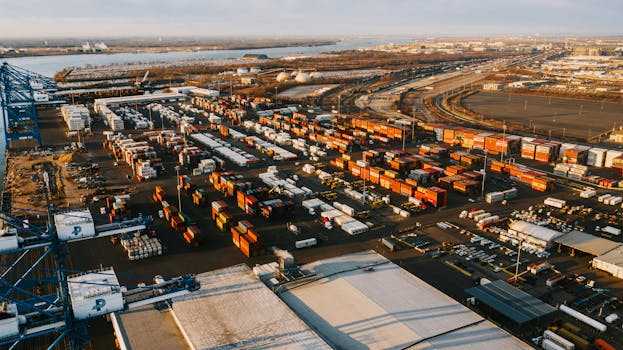
**
Goyal Unveils Mammoth ₹3 Lakh Crore Push for Research, Employment, and Startups in India
Union Minister Piyush Goyal recently announced a groundbreaking initiative aimed at boosting India's economic growth through a massive investment in research and development, job creation, and the burgeoning startup ecosystem. The ₹3 lakh crore (approximately $36 billion USD) plan is poised to significantly impact various sectors, positioning India as a global leader in innovation and employment generation. This ambitious program is expected to create millions of jobs, foster technological advancements, and solidify India's position as a major player in the global economy. The announcement has sent ripples of excitement through the Indian business community and beyond, generating considerable buzz around Indian startup ecosystem, employment generation in India, and research and development in India.
A Multi-pronged Approach to Economic Growth
The ₹3 lakh crore allocation isn't a single, monolithic program but rather a strategic distribution across several key areas, designed to create a synergistic effect. The plan meticulously targets crucial areas, including:
Boosting Research and Development (R&D): Fueling Innovation
A substantial portion of the funds will be channeled into bolstering India's R&D capabilities. This includes:
Strengthening Research Institutions: Significant investments are planned for upgrading existing research institutions and establishing new ones, particularly in emerging technological fields like artificial intelligence (AI), machine learning (ML), biotechnology, and renewable energy. This will help attract top talent and foster cutting-edge research.
Funding for Scientific Research Projects: The government will provide generous grants and funding opportunities for researchers across various disciplines, encouraging groundbreaking innovation and fostering scientific breakthroughs. This focus on funding for research projects is key to achieving technological self-reliance.
Promoting Public-Private Partnerships: The initiative will actively encourage collaborations between public research institutions and private sector companies, leading to faster commercialization of research findings and creating more high-paying jobs in India.
Creating Employment Opportunities: Addressing the Job Market
The plan addresses the critical need for job creation in India. Key initiatives include:
Skill Development Programs: Massive investments are planned in skill development programs, equipping the Indian workforce with the skills needed for the jobs of the future. This focus on skill development in India is crucial to ensure the workforce can adapt to the rapidly changing technological landscape.
Support for MSMEs (Micro, Small, and Medium Enterprises): MSMEs are the backbone of the Indian economy and a major source of employment. The plan includes substantial support for MSMEs through access to credit, technology upgrades, and market expansion opportunities. This will help boost employment opportunities in MSMEs.
Investment in Infrastructure: Significant investments in infrastructure projects, such as transportation, energy, and communication networks, will create a wealth of employment opportunities across various sectors. This will lead to increased infrastructure development in India and propel economic growth.
Nurturing the Startup Ecosystem: Fostering Entrepreneurship
The Indian startup ecosystem has witnessed phenomenal growth in recent years. This plan further strengthens its potential by:
Funding for Startups: The government will offer a range of funding options for startups, including grants, venture capital support, and incubation centers. This commitment to startup funding in India will help early-stage companies scale and create high-value jobs.
Regulatory Reforms: Streamlining regulations and simplifying processes for startups will create a more conducive environment for entrepreneurship. Reducing bureaucratic hurdles will be crucial to promoting ease of doing business in India.
Mentorship and Training: The plan includes initiatives to provide mentorship and training programs for aspiring entrepreneurs, equipping them with the necessary skills and knowledge to succeed. This will help nurture the next generation of Indian entrepreneurs.
Economic Implications and Long-Term Vision
The ₹3 lakh crore investment represents a significant commitment to driving long-term economic growth in India. The plan aims to:
Increase GDP Growth: By boosting innovation, employment, and entrepreneurship, the initiative is expected to significantly contribute to India's GDP growth.
Improve Global Competitiveness: Increased investment in R&D and technological advancements will improve India's global competitiveness across various sectors.
Reduce Unemployment: The focus on job creation and skill development will help address the issue of unemployment, particularly among the youth.
Promote Inclusive Growth: The plan emphasizes inclusive growth by focusing on MSMEs and creating opportunities for people from all backgrounds.
Challenges and Opportunities
While the initiative holds immense promise, challenges remain. Effective implementation, transparency, and accountability are crucial to ensuring the successful execution of the plan. Moreover, addressing potential bottlenecks in bureaucratic processes and promoting efficient allocation of resources will be vital. However, the scale of investment and the comprehensive nature of the plan present a significant opportunity for India to leapfrog into a new era of economic prosperity and technological leadership. The success of this initiative will depend on the effective collaboration of government agencies, research institutions, private sector companies, and the entrepreneurial community. The focus on Indian economy growth hinges on the execution of this ambitious plan.
The announcement has already sparked conversations around India's future economy, employment trends in India, and the future of technology in India. The success of this plan will have a profound and lasting impact, shaping India's economic landscape for years to come. The coming months and years will be critical in observing the impact of this significant investment and its contribution towards a stronger and more prosperous India.




















